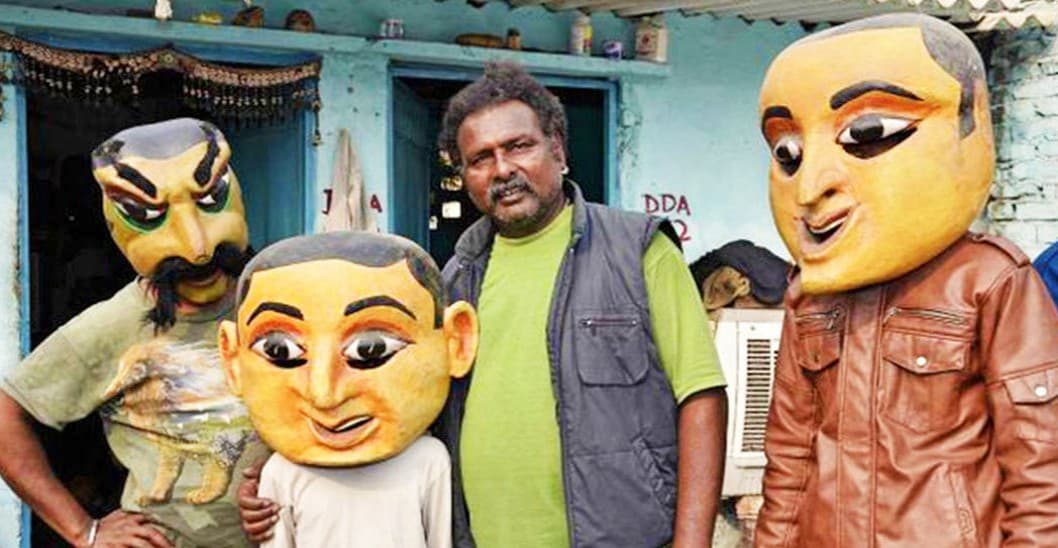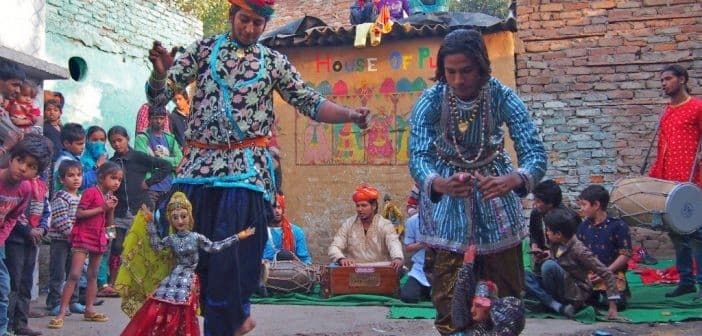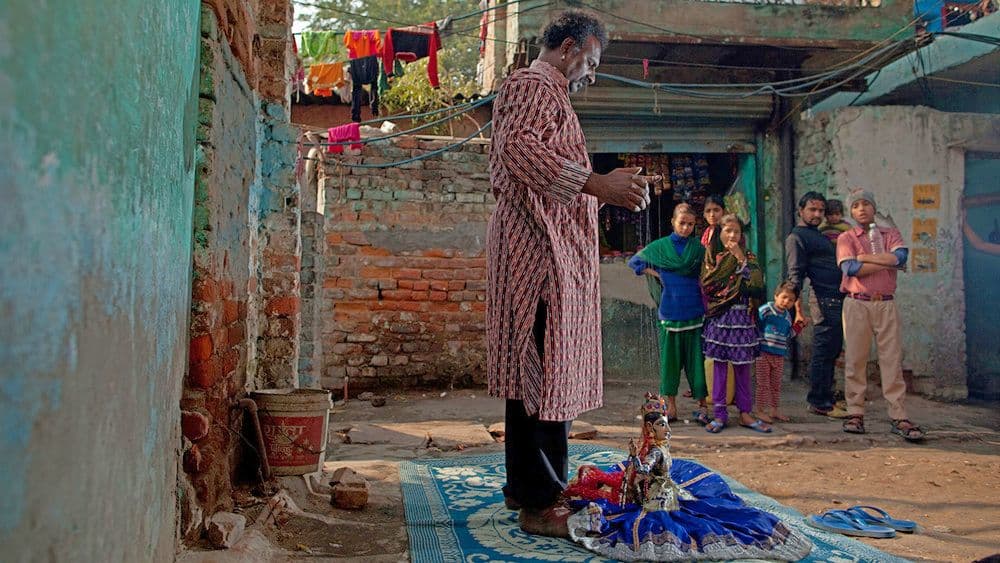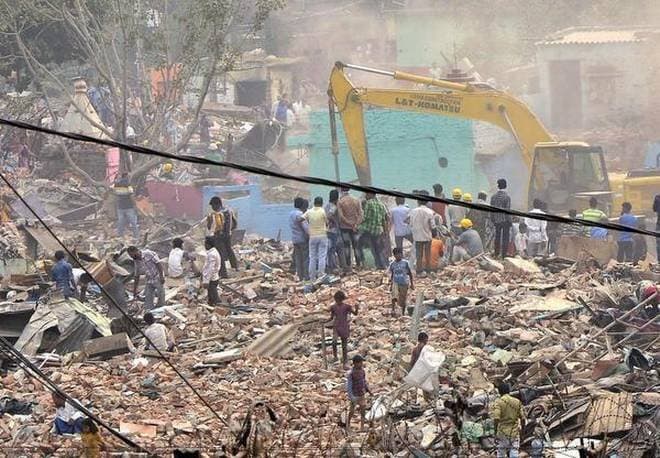Putting their lives at stake, preserving their trade secrets, fighting a losing battle against modern entertainment, this is the roller coaster story of the street artists of Kathputli colony.
Imagine a locality where there is an artist in every home. Puppeteers, musicians or guitarist, dancers or flashmobs, magicians for birthday party, rope-walkers, fire-eaters — all living together in a tight-knit community for decades. Imagine the collective creative energy, the fire in the belly to perform day after day without a break. Putting their lives at stake, preserving their trade secrets, fighting a losing battle against modern entertainment, this is the roller coaster story of Kathputli colony.
The Flashback

It was the 1950s and a troupe of puppeteers from Rajasthan, who lived out of a suitcase, came upon a bare parcel of land on the outskirts of Delhi. They pitched up their tents there and decided to make it their home. Soon, their family and friends, all in the street entertainment business, joined them. By now word had spread about the large and welcoming community and performers from other states like Andhra Pradesh and Maharashtra began to follow suit. By 2010, the settlement, now known as Kathputli (Hindi for puppet) Colony had grown exponentially housing around 2800 families of street artists.
The heroes and heroines

What started as a traveling troupe doing puppet shows on the road turned more promising. There were artists who juggled razor-sharp knives- Jugglers and pulled trucks with their teeth. There were fire-breathing kids and gravity-defying trapeze artists. Thanks to this motley group of talent, Kathputli Colony began to receive its due attention.
The paradoxical success

Kathputli Colony enjoyed a wide fan base and was a darling of international press but serious questions over its unregulated status remained. Over the years, the artists living there had updated their tricks but the state of their living conditions remained horrendous, making it one of the largest slums in Delhi.
In an article for the Sydney Morning Herald in 2010, Matt Wade made this interesting observation about the settlement.
“Its residents perform for guests at the city's five-star hotels, in plush restaurants, at parties thrown by embassies and wealthy businessmen, and for audiences around the world. But they return to their windowless huts without running water and basic sanitation.”
For all their resourcefulness and brilliance, the residents were unfortunately not able to upgrade their living conditions.
Enter the anti-hero
In 2010, New Delhi won the right to host the Commonwealth Games. One of the major goals of the overseeing committee was to beautify the capital and the city’s many slum dwellings like Kathputli Colony were an eyesore to their vision. A few years earlier, The Delhi Development Authority (DDA) began to demolish such settlements under its master plan to make Delhi ‘slum-free’ and trained its gun on Kathputli Colony. Moreover, the 14 acres of land that housed the colony had become a prime real estate asset next to fast-growing neighborhoods like Naraina Industrial area, Shadipur and Kirti Nagar. That year, despite protests from residents and artists from across the world, the Delhi Government decided to redevelop the land commercially in a public-private partnership contract awarded to the Raheja group.
The promise

As the bulldozers arrived to crush down the only homes they had known, the artists were inconsolable. The only solace was the commitment made by the government that 5.22 hectares of the land would be utilized into constructing 10-floor buildings totaling 2800 flats for the artists. Apart from that, one portion was allotted to the Rahejas to develop their commercial and residential buildings. The developer also agreed to build community spaces for a heritage museum, an amphitheater, retail outlets, a police post, religious site, weekly market, a children’s park and an area for wedding ceremonies.
The protest and rehabilitation
The DDA offered the artists a home each that measured 350 square foot and would have a room, a multipurpose room and a bathing area, but the artists were in no mood to relent. From street marches to court cases, the residents of Kathputli strongly condemned the government’s move but the court decided in favour of the DDA. In the protests, the artists received backlash, both verbal and physical from the government. When they realized that there was no other option but to relent, the artists, began to move with a heavy heart to a nearby plot earmarked for temporary housing till their permanent houses got built.
Light at the end of the tunnel
In 2018, nine years after their homes were demolished, the DDA finally laid a foundation to the plan of rehabilitating the families of Kathputli Colony. It is not clear how much time it will take for the apartments to be ready but for the sake of their heritage and contribution to art, one hopes that the finished project is just the tonic these talented performers need to continue doing what they do best- bringing a smile to the faces of its audience.